New Yorkers presume they own the rights to Abstract Expressionism, with canonic works that reside permanently in the core holdings of MoMA and frequent sightings of both major and minor examples of the movement at auction houses and in the galleries.
Nonetheless, as a blockbuster exhibition of more than 150 paintings, sculptures and photographs that just opened at the Royal Academy of Arts in the heart of London is proving, AbEx belongs to the world. "Abstract Expressionism" opened on September 24, 2016 and remains on view through January 2, 2017. It is the first exhibition of Abstract Expressionism in London in around 50 years.
Proving the global point, the highlight of the exhibition, Jackson Pollock’s killer painting Blue Poles, was shipped in from the National Gallery of Australia in Canberra. The survey currently at the Royal Academy moves on to the Guggenheim in Bilbao, and a separate Pollock retrospective is about to open in Basel.
.
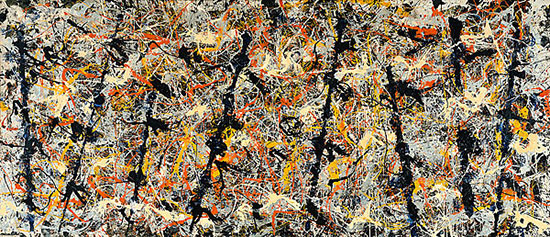
"Blue Poles (Number 11, 1952)" by Jackson Pollock, 1952. Enamel and aluminum paint with glass on canvas, 212.1 x 188.9 cm. National Gallery of Australia, Canberra. © The Pollock-Krasner Foundation ARS, NY and DACS,
London 2016.
.
AbEx has been an export since it was still going on. The dissemination started in the 1950s when artists from the Tachists (or “lyrical” abstractionists) in Paris to the Gutai group in Osaka were responding to the action painting coming out of studios in Greenwich Village and the Hamptons. Now AbEx artists are mainstays of museums in Europe and Asia.
The Royal Academy exhibition musters all the Olympian names from the movement—Pollock, Willem de Kooning, Arshile Gorky, Franz Kline, Barnett Newman, Mark Rothko, David Smith—but it aims for more than just a basic survey. This show offers an earnest exercise in art historical revisionism, stretching the New York-centric narrative to West Coast figures including Sam Francis, Mark Tobey and Minor White.
.
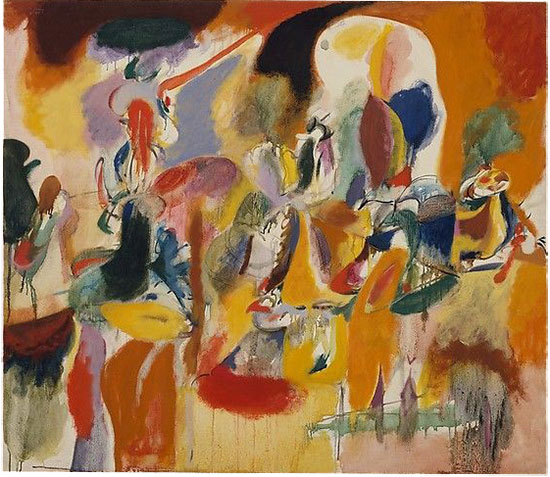
"Water of the Flowery Mill" by Arshille Gorky, 1944. Oil on canvas, 107.3 x 123.8 cm. The Metropolitan Museum of Art, New York. © ARS, NY and DACS, London 2016. Photo © 2016. Image © The Metropolitan Museum of Art/Art Resource/Scala, Florence.
.
A curatorial coup is the extraction of loans from the notoriously irascible Clyfford Still Museum in Denver. Rather than emphasize the gestural or chromatic excesses of the works, the curators have zeroed in on such themes as myth-making and the presence of the figure. The result is a refreshing new take on some familiar ideas.
One particularly thrilling gallery unites two extraordinary works by Pollock, his final masterpiece Blue Poles (1952) and Mural (1943), which is in the collection of the University of Iowa Museum. The last time I saw Blue Poles, originally titled Number 11, was at the MoMA Pollock retrospective in 1998, when it was allowed to leave Australia for the first time since its acquisition. That acquisition, it’s worth noting, needed the Prime Minister’s approval, as the National Gallery director exceeded his million-dollar budget. It alone is worth a trip to Piccadilly.
Unlike so many paintings he made earlier in his career, which came as spontaneously to Pollock as leaves to a tree, Blue Poles was the slow achievement of a laborious process, and the bright blue of the eight rhythmic “poles,” those bolts of unabashed chromaticism that were so unusual in his work, were late hits. Made by imprinting blue paint with two-by-fours, they saved a painting that had been going nowhere. As Lee Krasner recalled, Pollock was frustrated by the struggle: “‘This won't come through.' That went on for quite a long time … when he got hung up in something, like Blue Poles, where he did get hung up, it took quite a long time. This went on beyond weeks.”
There are many other highlights in the exhibition, including Krasner’s The Eye is the First Circle (1960), Arshile Gorky’s early masterwork Water of the Flowery Mill (1944), de Kooning’s Woman II (1952), Franz Kline’s Vawdavitch (1955) and Mark Rothko’s No. 15 (1957).
.
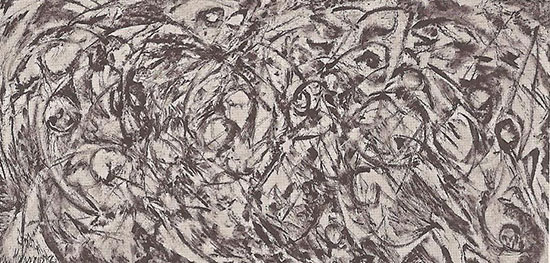
"The Eye is the First Circle" by Lee Krasner, 1960. Oil on canvas, 235.6 x 487.4 cm. Private collection, courtesy Robert Miller Gallery, New York. © ARS, NY and DACS, London 2016.
.
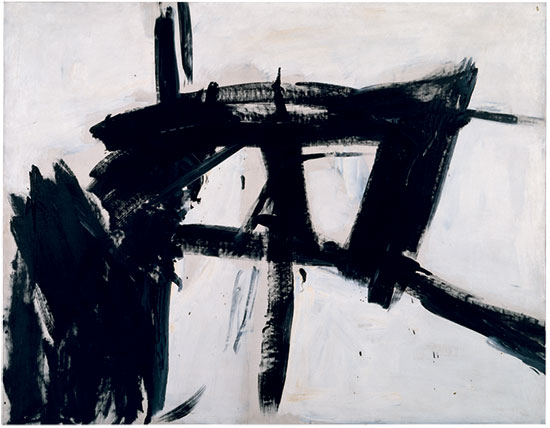
"Vawdavitch" by Franz Kline, 1955. Oil on canvas, 158.1 x 204.9 cm. Museum of Contemporary Art Chicago, Claire B. Zeisler 1976.39. © ARS, NY and DACS, London 2016. Photo: Joe Ziolkowski.
.
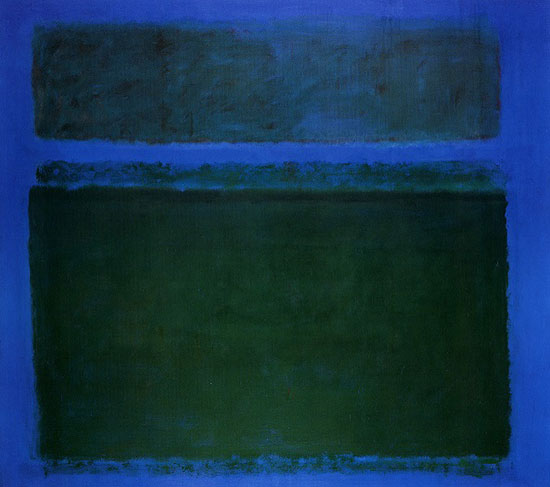
"No. 15" by Mark Rothko, 1957. Oil on canvas, 261.6 x 295.9 cm. Private collection, New York. © 1998 Kate Rothko Prizel & Christopher Rothko ARS, NY and DACS, London.
.
Co-curators David Anfram (senior consulting curator at the Clyfford Still Museum) and Edith Devaney (contemporary curator of the Royal Academy) also selected sculpture by David Smith, photographs by Harry Callahan, Herbert Matter and Barbara Morgan.

"Woman II" by Willem de Kooning, 1952. Oil, enamel and charcoal on canvas, 149.9 x 109.3 cm. The Museum of Modern Art, New York. Gift of
Blanchette Hooker Rockefeller, 1995. © 2016. The Willem de Kooning Foundation / Artists Rights Society (ARS), New York and DACS, London. Photo © 2016. Digital image, The Museum of Modern Art, New York/Scala, Florence.
.
_____________________________
BASIC FACTS: “Abstract Expressionism” is on view September 24, 2016 to January 2, 2017 at the Royal Academy of Arts, Burlington House, Piccadilly, London W1J 0BD, UK. www.royalacademy.org.uk
_____________________________
Copyright 2016 Hamptons Art Hub LLC. All rights reserved.
